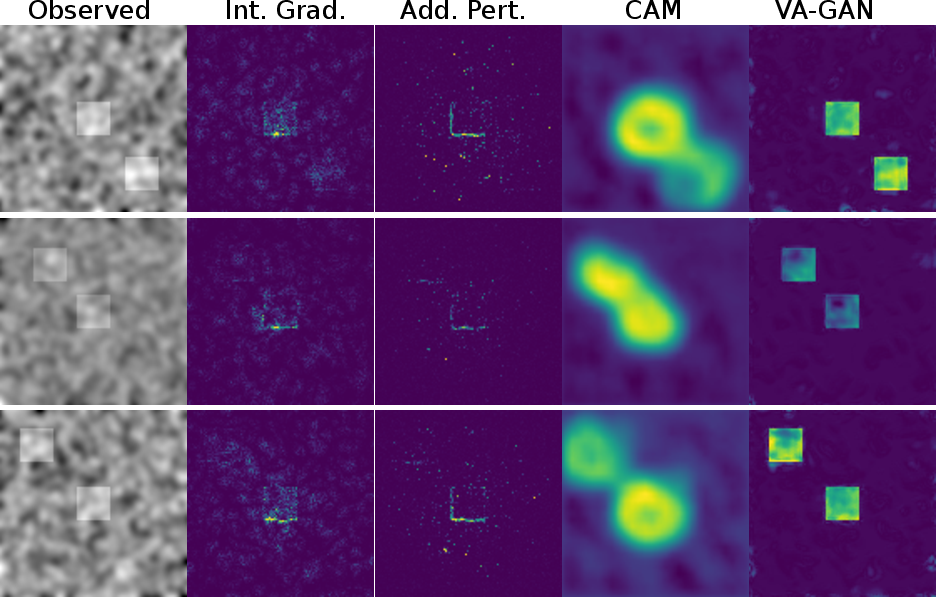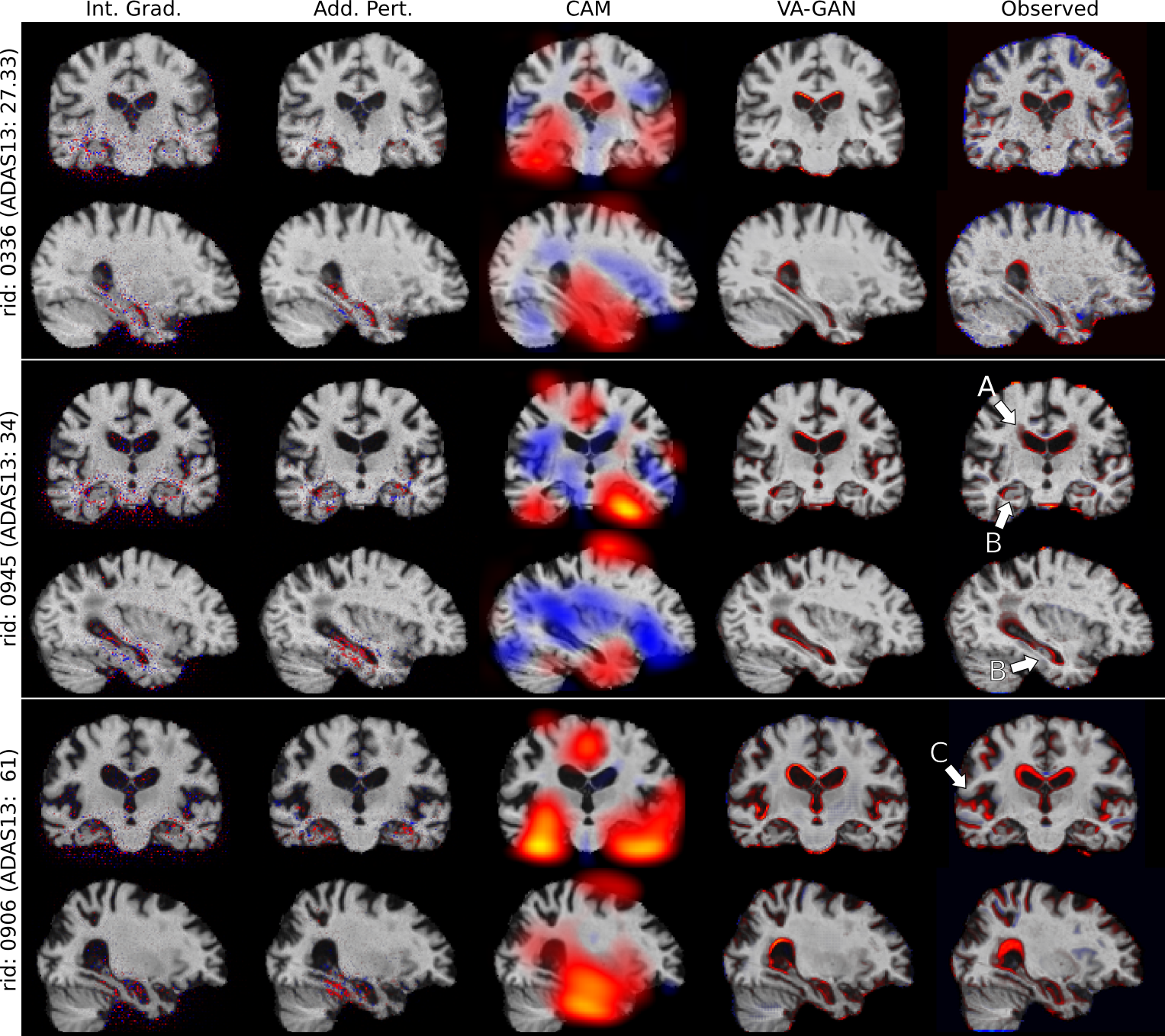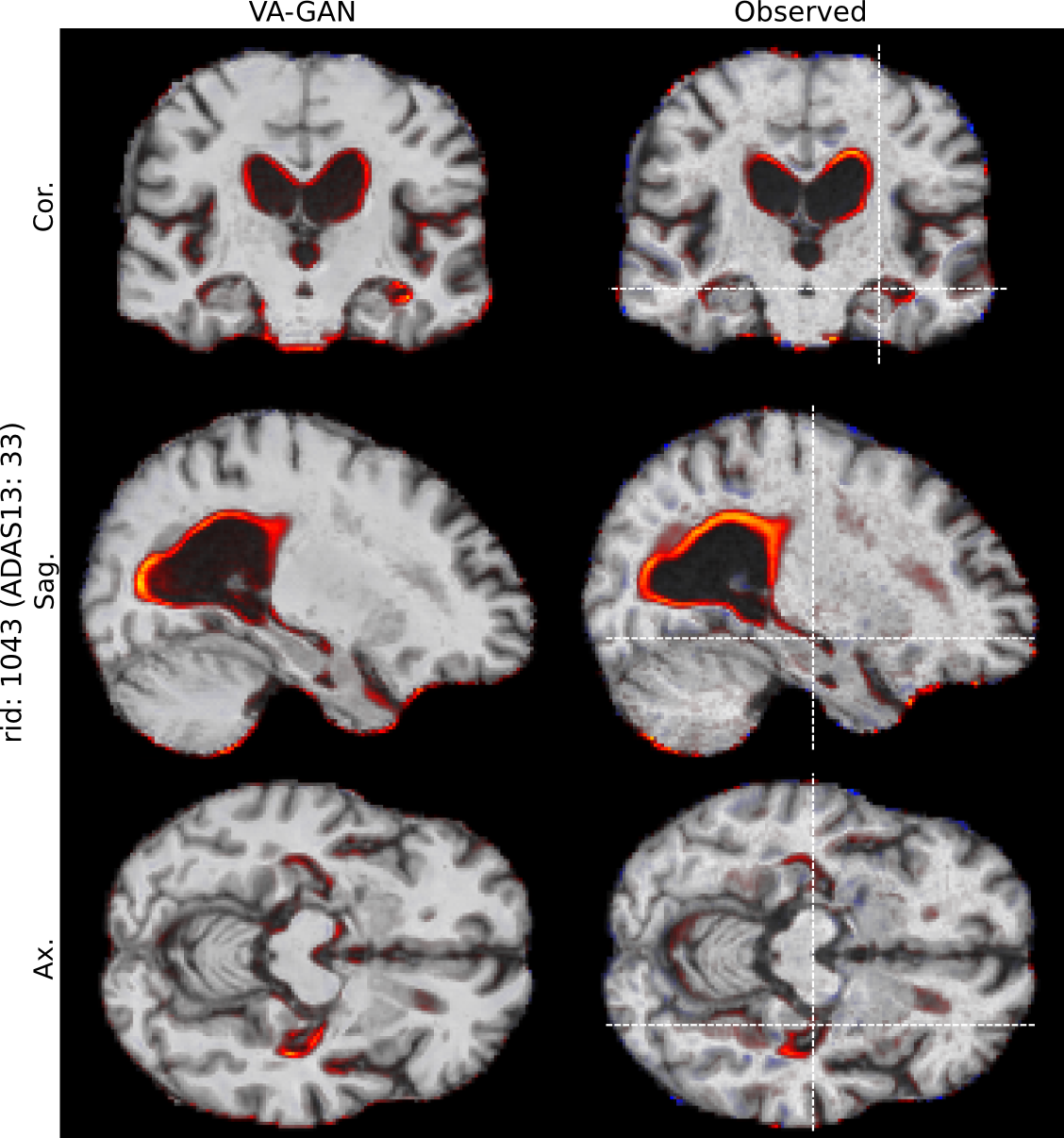VA-GAN Code
Public tensorflow implementation for the Visual Feature Attribution using Wasserstein GANs method, which was accepted for presentation at CVPR 2018.
If you find this code helpful in your research please cite the following paper:
@InProceedings{baumgartner2018visual,
author = {Baumgartner, Christian F. and Koch, Lisa M. and Tezcan, Kerem Can and Ang, Jia Xi and Konukoglu, Ender},
title = {Visual Feature Attribution Using Wasserstein {GAN}s},
booktitle = {The IEEE Conference on Computer Vision and Pattern Recognition (CVPR)},
month = {June},
year = {2018}
}
The paper can be found here.
Don't like tensorflow? A pytorch version implemented by Orobix can be found here.
Abstract: Attributing the pixels of an input image to a certain category is an important and well-studied problem in computer vision, with applications ranging from weakly supervised localisation to understanding hidden effects in the data. In recent years, approaches based on interpreting a previously trained neural network classifier have become the de facto state-of-the-art and are commonly used on medical as well as natural image datasets. In this paper, we discuss a limitation of these approaches which may lead to only a subset of the category specific features being detected. To address this problem we develop a novel feature attribution technique based on Wasserstein Generative Adversarial Networks (WGAN), which does not suffer from this limitation. We show that our proposed method performs substantially better than the state-of-the-art for visual attribution on a synthetic dataset and on real 3D neuroimaging data from patients with mild cognitive impairment (MCI) and Alzheimer’s disease (AD). For AD patients the method produces compellingly realistic disease effect maps which are very close to the observed effects.
Author of this code:
- Christian F. Baumgartner (email)
How to get the code to run:
-
Step 1: Set up a virtual environment (e.g. conda or virtualenv) with Python 3 (I use Python 3.5), and tensorflow (I used version 1.12). There is a requirements.txt file so
pip install -r requirements.txtshould work. Tensorflow is not included in the requirements file so you can decide whether you want to install the GPU or CPU version. -
Step 2: Open
config/system.pyand change the settings to match your system. -
Step 3: Run the method by executing
python vagan_train, which should automatically build the synthetic data, run the WGAN training, and write the progress to tensorboard (tensorboard --logdir=logdir/gan --port=8008). It takes around 1h hour or 1000 steps to train the method on synthetic data. -
Step 4: Get some results on the test set by running:
python vagan_test_loop.py logdir/gan/synthetic_experiment(runs without GPU)
You can also train a classifier (classifier_train.py) and then generate all the
types of saliency maps discussed in the paper using the classifier_test_saliencies.py
script.
How is the code structured:
- All scripts that can be run directly using
python <script>.pyare in the base directory. - All other code pertaining to VA-GAN is in the
vaganfolder. All code pertaining to the classifier and the conventional saliency maps is in the folderclassifier - The main code for VA-GAN can be found in
vagan/model_vagan.py - All code pertaining to the different data sets is in the
datafolder tfwrappercontains shortcuts for building layers etc.
Tricks for training and tuning
- Using the
tanhfunction after the generator output can make training more stable. This requires that the input data is scalled into the range of -1, to 1. - The Wasserstein distance, i.e. negative critic loss, can be used for determining how well the network is doing. Values closer to 0 usually produce better results. However, the Wasserstein distance tends to be so noisy that choosing the final model on the best value does not work well.
- The best way to select a model is to look at the generated validation images in tensorboard.
- VA-GAN does overfit when trained too long or with insufficient data. For instance the synthetic experiment with only 1000 data points does not produce good results. If your data set is not big enough you may wish to play around with dropout and weight decay for the critic and map generator.
- The default network for the synthetic experiments (
normalnet2D) is modelled after the 3D experiment, so it has an unusual layer structure. Other architectures (e.g. >1 layers per max pooling step) may produce better results.
Bugs
Please use the issue tracking tool to report bugs or email directly to baumgartner@vision.ee.ethz.ch.



